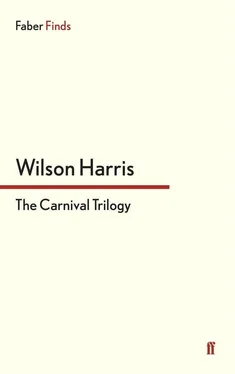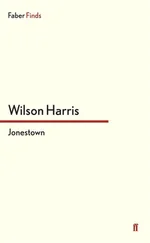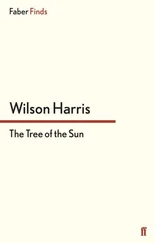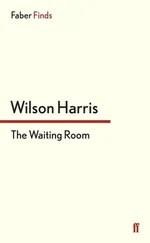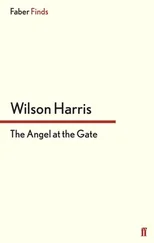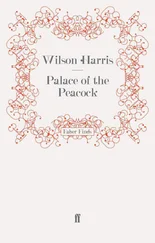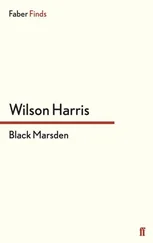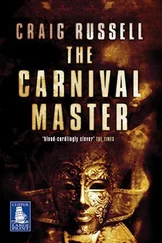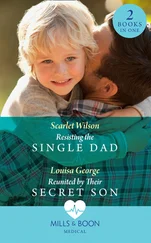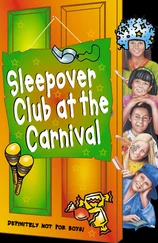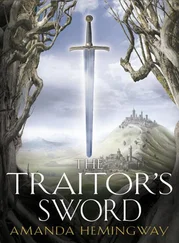“Which are you likely to be,” he said to me as he rose from his chair to advance to the front of the room, “pawn or child of conscience?” I was their child, his and Jennifer’s. I was born on 2 August 1932. I was scarcely a month old when my father donned the mask of Thomas and the trial took place. In asking me such a question, he leaned upon me for support in the midst of his distress.
Judge Quabbas may have perceived it all. He never lived to write the play or the book he had contemplated, but my guide Masters unearthed the unwritten pages from his grave. He proffered them to me to swallow and consume and to bring forth progeny of mutual spirit.
The trial turned upon the reality of the pawn. Was humanity a pawn of fate, or conditioned responses, of existent or non-existent establishments? How interlinked are fate and freedom within an assembly of overlapping bodies and masks?
My father leaned upon me for support. I was a mere straw of flesh-and-blood. He needed to garner his innermost resources to play Thomas. He needed the wisp of the newborn as innately relevant to bruised insides, bruised psyche, bruised labour. In giving birth to me within the cave of bruised humanity, he (as pawn of circumstance) was subtly undergoing a translation of conscience. Though it was very painful at the time it was an initiation into a task that lay ahead of him in his short, controversial but brilliant career.
“Turn my bruise around and around,” he said to Judge Quabbas. “Turn my insides out. Yes, do. Such is the spirit of the cave. I stand between the murdered czar of Carnival and Thomas. I wear both embalmed masks. I slip from one to the other. The wound I bear is self-inflicted. I cannot be sure where I truly belong — with the vested interests that put bread in my mouth and force my hand or with the misery of freedom, the desire for freedom I suffer acutely. Thus is my child born, the czar’s child as well, Thomas’s child as well. Hideous pawn to suffer the self-inflicted wounds we suffer or conscience, conscience , the innermost creativity of conscience, within the labyrinth of the future.”
The trial of Thomas was to overshadow my father’s life and the remaining days of Judge Quabbas’s life. It was to give a luminous quality to the “savage heart” as the ingrained faculty within the cave of character-masks, the apparently embalmed “savage heart” yet alive and a peculiarly self-reversible organ of love, organ of feud, heart into heart, love into feud, feud into love.
My father was to suffer the stroke of the wheel through which Thomas had leapt at the Carnival czar. It would happen in seven years, Masters said to me, when he defended a prince of El Dorado and confronted that “savage heart” as feud, divine feud, to be tested and borne and analysed by an endangered civilization if that civilization were not to succumb to violence but to fertilize the new womb of an age through paradox, through transfigured wounds.
Mr Quabbas was to suffer the knife of love as a most tender, a most appropriate judgement by that “savage heart” in its unravelling of the limbs of love, unattainable love to be spied upon, enjoyed, even at the end of life, in one’s last moments on earth.
Death by the “savage heart” came to my father as a young man (I was seven years old at the time), but it fell almost immediately upon Judge Quabbas as he emerged from the twilight of the cave on to the night of the tennis court where I was led by Masters. A week had passed since the inception of the trial of the character-mask of Thomas. Masters had spent some time in the library, everyone else had gone home, and he decided to leave the College by a short cut through the tennis court. It was around seven-thirty. The watchman was having his evening supper in the lodge at the main entrance. Masters made his way from the library down to a covered pathway linking the main hall to the gymnasium and then he turned into a path leading to the tennis court.
I followed him through the dark. The lights of the building shone at our back. Suddenly a glare through the trees from the court addressed us and we knew a game was in progress. The grass lawn came into view. The lights at the edge of the court played not upon tennis performers but upon Alice, Mr Quabbas’s niece, who was practising the high jump. She thought she was alone. She had switched on the lights and set up the frame and bar. She jumped, ran around in a circle, paused, ran forward and jumped effortlessly again. She rested for a few seconds and raised the bar once more.
I was enchanted by the quality of action. She leapt into the air with the magic of dream. A curious psychical music animated her limbs, her arms, her entire body. It was the dance of sublimity. She knew, or felt she was alone, and this knowledge — the secure knowledge of playing to no audience at all — did not incapacitate her. Rather it gave her the rhythm of inner and outer, unforced spaces, a supernaturally visible heart and invisible psyche and lung, mysterious concretion of blood.
She was veiled, her blood was veiled and unseen, yet innocently nude flash of grace, sacramental body of grace, with each sublime gesture of flying, leaping spirit. It was as if Masters beheld the entire memorial of embalmed god or goddess utterly reversed. It was as if I beheld a miracle. Excavated, flying body was alive in the girl. The knife of music penetrated to heart, lung, and to every entity and cell within her; it drew every luminous organ from within her and cast an unselfconscious, vital garment over the spirit of a body to imbue it with a fullness of joy we had never seen before. Was this a vision of paradise?
We were confused but liberated. The knife! We pondered the sharpness of unsleeping music in space that one hears with an ear and a sense other than given ear or sense. Was it (that sharp music cutting into, yet knitting, a veil) the first Thomasian stroke of a death sentence upon Judge Quabbas enunciated through the “savage heart” of love in half-sleeping, half-leaping Alice?
Masters lodged himself deeply, flattened himself unobtrusively, into the tree against which he stood in order not only to view the high jump goddess but also to avoid being seen by another presence with eyes glued upon Alice. That other presence was Judge Quabbas himself. He had secured himself in a bush. The leaves and the play of light hid him from her as within a mask but we could see him dream-distinctly, however darkly. The judge was so transported, so intent on the knife that cut into her, as well as into him, that he was unaware of the other standing but a few feet from him lodged in a tree, or uncut wood, resembling the tree or the uncut wood of unwritten epitaph, unopened grave that was already yawning at his feet.
Young, dancing, leaping, immortal Alice! Had the ancient Magna Carta crone, Aunt Alice Bartleby of the Alms House, once looked like this? Had she danced like this long, long ago before she tripped for her daylight supper?
Masters realized that the tree against his back was seventy-five or eighty years old. Perhaps more. It was silk cotton. It would have been a mere seed in the ground when Aunt Alice was born.
Judge Quabbas’s mask of bush grew from a cherry tree scarcely forty years old. That would have been a mere seed in the ground when the marble/market woman of Cannon Row Estate was born. How old would Jane Fisher of New Forest have been then? She was the marble woman’s East Indian daughter who married a jealous fisherman. He played Carnival in the mask of Thomas, the revolutionary saint. He did so in order to kill the Carnival czar or the czar’s elusive, superior Everyman Masters in whose character-mask an overseer damned his wife and left her with child. As for Jane Fisher the Second of London — she had not yet been born and lay in the seed-mask of the future.
Читать дальше
